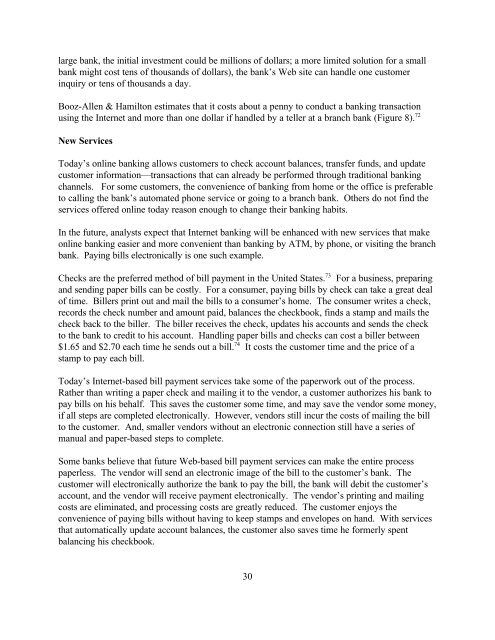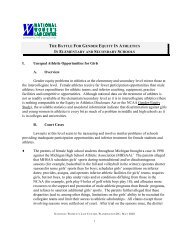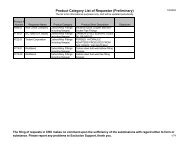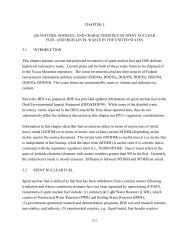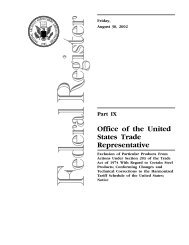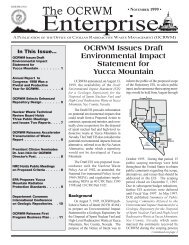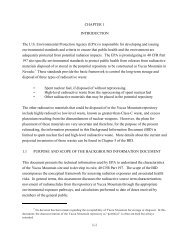large bank, the initial investment could be millions of dollars; a more limited solution for a smallbank might cost tens of thousands of dollars), the bank’s Web site can handle one customerinquiry or tens of thousands a day.Booz-Allen & Hamilton estimates that it costs about a penny to conduct a banking transactionusing the Internet and more than one dollar if handled by a teller at a branch bank (Figure 8). 72New ServicesToday’s online banking allows customers to check account balances, transfer funds, and updatecustomer information—transactions that can already be performed through traditional bankingchannels. For some customers, the convenience of banking from home or the office is preferableto calling the bank’s automated phone service or going to a branch bank. Others do not find theservices offered online today reason enough to change their banking habits.In the future, analysts expect that Internet banking will be enhanced with new services that makeonline banking easier and more convenient than banking by ATM, by phone, or visiting the branchbank. Paying bills electronically is one such example.Checks are the preferred method of bill payment in the United States. 73 For a business, preparingand sending paper bills can be costly. For a consumer, paying bills by check can take a great dealof time. Billers print out and mail the bills to a consumer’s home. The consumer writes a check,records the check number and amount paid, balances the checkbook, finds a stamp and mails thecheck back to the biller. The biller receives the check, updates his accounts and sends the checkto the bank to credit to his account. Handling paper bills and checks can cost a biller between$1.65 and $2.70 each time he sends out a bill. 74 It costs the customer time and the price of astamp to pay each bill.Today’s Internet-based bill payment services take some of the paperwork out of the process.Rather than writing a paper check and mailing it to the vendor, a customer authorizes his bank topay bills on his behalf. This saves the customer some time, and may save the vendor some money,if all steps are completed electronically. However, vendors still incur the costs of mailing the billto the customer. And, smaller vendors without an electronic connection still have a series ofmanual and paper-based steps to complete.Some banks believe that future Web-based bill payment services can make the entire processpaperless. The vendor will send an electronic image of the bill to the customer’s bank. Thecustomer will electronically authorize the bank to pay the bill, the bank will debit the customer’saccount, and the vendor will receive payment electronically. The vendor’s printing and mailingcosts are eliminated, and processing costs are greatly reduced. The customer enjoys theconvenience of paying bills without having to keep stamps and envelopes on hand. With servicesthat automatically update account balances, the customer also saves time he formerly spentbalancing his checkbook.30
One-to-one MarketingToday, most banks are still equipping their Web sites with basic transactions processing and dolittle with tailored or one-to-one marketing. However, some now realize that through theInternet, a bank can get to know a customer’s banking priorities and preferences even better thanit could when banking was done in small neighborhood branches.Bank of America’s “Build Your Own Bank” provides an example of how one-to-one marketingcould work. Internet customers using this service provide the bank with basic information abouttheir place of residence, occupation, age, income and gender, whether they own or rent a home,and what types of accounts they have with the bank. They then indicate their financial interestsand priorities—whether saving and investing, home buying/improvement, building a business,retirement, economic and financial markets, electronic commerce, or simply better financialorganization and budgeting. Based on these inputs, the bank responds with Money Tips and newsitems geared to the customer’s interests, and special offers for the services the customer hasprioritized.These and similar mechanisms give banks the opportunity to cross-sell products and services.Ideally, the customer benefits from these tailored offerings, as well. At a minimum, he shouldbenefit from greater convenience. Because his account profile automatically gets called up whenthe customer logs into a personalized site, he wastes no time entering account information.Having up-to-date information about balances in each account gives the customer a snapshot ofhis holdings with the bank without having to do the math himself. The personalized tips andspecial offers may help the customer to make important financial decisions.The FutureOver the next few years, a growing number of American households are expected to do theirbanking online—whether through a dial-up connection to their bank or through the Internet.Roughly 4.5 million households were banking online in 1997. By the year 2000, as many as 16million households are expected to bank online. 75INSURANCEInsurance carriers’ Web sites typically provide customers with basic corporate and policyinformation, but refer customers to offline agents or customer service phone representatives inorder to make a purchase. A more limited number of carriers’ sites, and other sites, includingbanks, securities brokerages, real estate companies and automobile marketplaces, allow Internetcustomers to purchase term life, automobile and homeowners’ insurance online.31
- Page 2 and 3:
Frequently Asked QuestionsHow was t
- Page 6 and 7:
Commissioner BiographiesDean Andal,
- Page 8:
Paul Harris, Sr., Delegate, Virgini
- Page 11 and 12: Robert Novick, General Counsel,Offi
- Page 13 and 14: Stanley Sokul, Independent Consulta
- Page 15 and 16: (d) Definition of Generally Imposed
- Page 17 and 18: (D) Internet access service.--The t
- Page 19 and 20: (b) Membership.--(1) In general.--T
- Page 21 and 22: (B) an examination of the collectio
- Page 23 and 24: (iii) imposes an obligation to coll
- Page 25 and 26: (B) Exception.--Such term does not
- Page 27 and 28: (2) to accelerate the growth of ele
- Page 29 and 30: Traditional business and sales tax
- Page 31 and 32: THE EMERGING DIGITAL ECONOMYIntrodu
- Page 33 and 34: INTRODUCTIONDuring the past few yea
- Page 35 and 36: CHAPTER ONE:THE DIGITAL REVOLUTIONT
- Page 37 and 38: What makes this rise in IT’s nomi
- Page 39 and 40: Despite these impressive trends, th
- Page 41 and 42: Hundreds of new firms are starting
- Page 43 and 44: Table 3. The Race to Build Out the
- Page 46 and 47: usiness electronically with new sup
- Page 48 and 49: increased 40 percent over the previ
- Page 50 and 51: from one supplier to another. It co
- Page 52 and 53: and maintaining customer relationsh
- Page 54 and 55: For a business to feel comfortable
- Page 56 and 57: CHAPTER FOUR:DIGITAL DELIVERY OF GO
- Page 58 and 59: and marketing costs may become too
- Page 60 and 61: Lower sales and marketing costsIt i
- Page 64 and 65: Table 4. Internet Sales of Personal
- Page 66 and 67: For the multimedia industry, the qu
- Page 68 and 69: ook according to topic. The topic c
- Page 70 and 71: THE FUTUREAnalysts believe that Int
- Page 72 and 73: Often today, consumers are not give
- Page 74 and 75: CONVENIENCEConsumers cite convenien
- Page 76 and 77: This pattern of lower prices is not
- Page 78 and 79: CHAPTER SEVEN:WORKERS IN THE DIGITA
- Page 80 and 81: WORKFORCE FLEXIBILITYWorkforce flex
- Page 82 and 83: CHAPTER EIGHT:CHALLENGES AHEADThis
- Page 84 and 85: ENDNOTES1. “Monetary Policy Testi
- Page 86 and 87: (CERN) in Switzerland. In 1991, the
- Page 88 and 89: 34. Shankar, Bhawani. “Digital TV
- Page 90 and 91: 55. Number of Online Newspapers on
- Page 92 and 93: 78. “Internet Insurance: A Study


